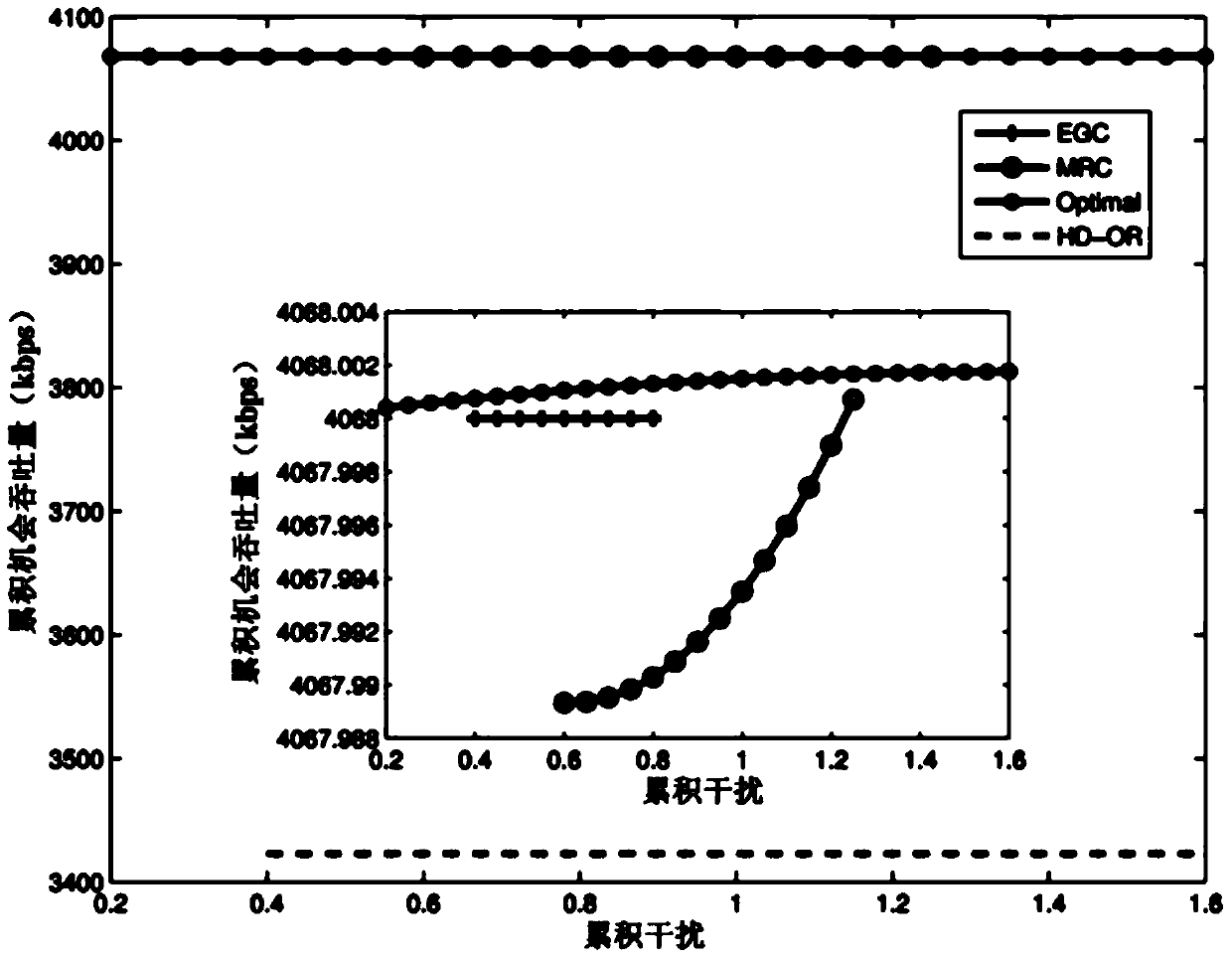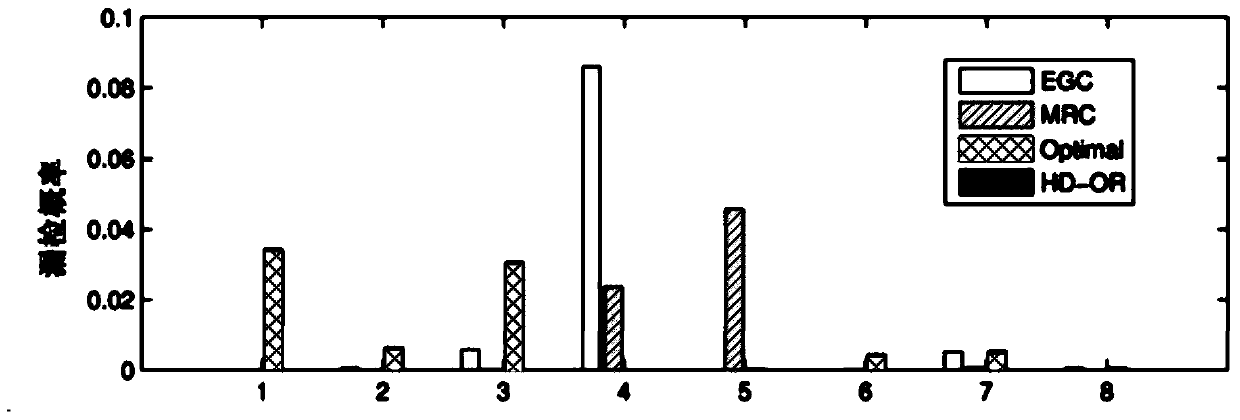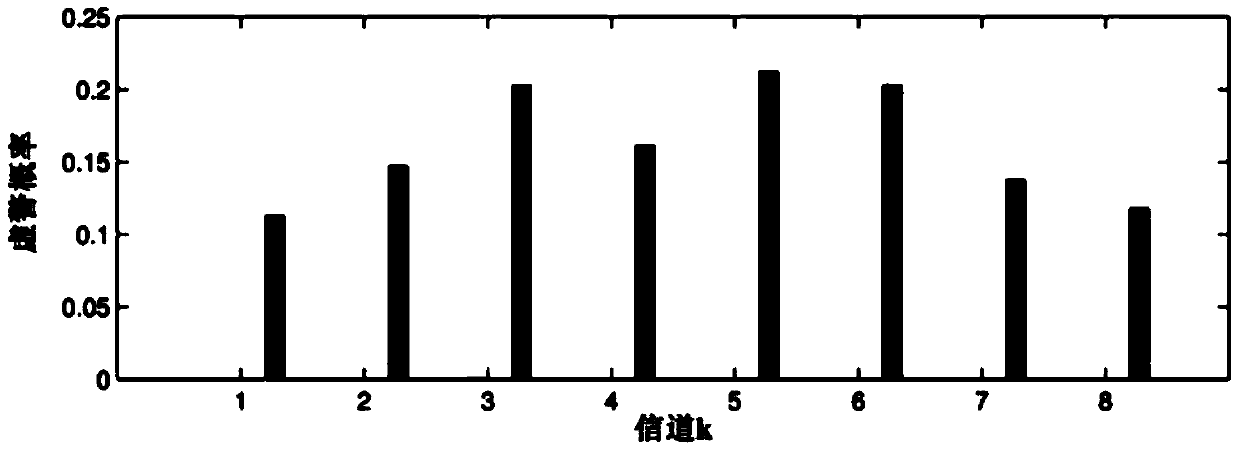Multi-user multi-channel collaborative spectrum sensing method based on filter bank
A cooperative spectrum sensing and filter bank technology, which is applied in the directions of multiple use of transmission paths, wireless communication, digital transmission systems, etc., can solve the problem of multi-channel sensing strategy that has not been mentioned, the serious spectrum diffusion of wavelet detection method, compressed sensing method issues such as high system cost
- Summary
- Abstract
- Description
- Claims
- Application Information
AI Technical Summary
Problems solved by technology
Method used
Image
Examples
Embodiment
[0107] Embodiments of the present invention will be further described in detail below in conjunction with the accompanying drawings,
[0108] Such as figure 1 As shown, a filter bank-based multi-user multi-channel cooperative spectrum sensing method of the present invention, the specific steps of the method are as follows:
[0109] (1), PU-SU channel characteristic modeling.
[0110] Assume that in a primary user communication system with K channels, PU spectrum occupancy is independent among each channel and is the same for all cognitive SUs. Let s(n) be the PU transmission signal, assuming that it satisfies an independent and identically distributed Gaussian random process with a mean of 0 and a variance of x m (n) is the PU data received by the mth SU; c m is the perceptual channel gain between the PU and the mth SU; v m (n) is the perceived channel noise, assumed to be additive Gaussian white noise, with a mean of 0 and a variance of Suppose the transmitted signal ...
PUM
 Login to View More
Login to View More Abstract
Description
Claims
Application Information
 Login to View More
Login to View More - R&D
- Intellectual Property
- Life Sciences
- Materials
- Tech Scout
- Unparalleled Data Quality
- Higher Quality Content
- 60% Fewer Hallucinations
Browse by: Latest US Patents, China's latest patents, Technical Efficacy Thesaurus, Application Domain, Technology Topic, Popular Technical Reports.
© 2025 PatSnap. All rights reserved.Legal|Privacy policy|Modern Slavery Act Transparency Statement|Sitemap|About US| Contact US: help@patsnap.com



